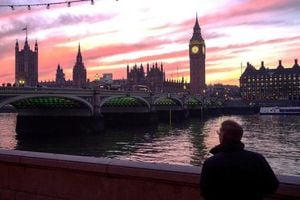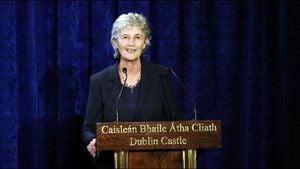From the dense, emerald stretches of the Amazon to remote islands in the Pacific, the world’s most isolated Indigenous communities are facing an existential crisis. According to a pair of urgent new reports from Survival International, a London-based Indigenous rights organization, nearly half of all uncontacted Indigenous groups — those who deliberately live apart from mainstream society — could be wiped out within the next decade. The warnings, delivered in late October 2025, paint a stark picture: logging, mining, drug trafficking, and even well-meaning intrusions are converging to threaten cultures and lives that have endured for centuries, far from the public eye.
Survival International’s latest tally identifies at least 196 uncontacted Indigenous peoples across 10 countries. More than 90% of these groups live in the Amazon rainforest, mainly in Brazil, with others found in the forests of Indonesia and on islands of India. These communities, as the Associated Press notes, are not "lost tribes" frozen in time. Rather, they are contemporary societies who have chosen isolation after generations of violence, slavery, and disease brought by outsiders. Their decision to remain uncontacted is a matter of survival and autonomy.
Fiona Watson, Survival’s research and advocacy director, put it bluntly: “These are what I would call silent genocides — there are no TV crews, no journalists. But they are happening, and they're happening now.” The organization’s executive director, Caroline Pearce, echoed the urgency, calling for the world, especially governments and industries, to recognize and address what she described as a "global emergency."
The threats facing these groups are staggering. According to Survival International’s report, nearly 65% of uncontacted peoples face threats from logging, about 40% from mining, and around 20% from agribusiness. In some cases, the numbers overlap, compounding the risk. The Kakataibo community of Peru’s Ucayali region, for example, faces an uncertain future due to illegal logging and the spread of cocoa cultivation. Herlin Odicio, a member of the Kakataibo who advocates for his people, warned at a recent London press conference, “In Peru, the government is erasing the laws that protect Indigenous rights. We are not asking the government for a favour. This is an ancestral right.”
While international law — including the International Labor Organization’s Convention 169 and the U.N. Declaration on the Rights of Indigenous Peoples — affirms Indigenous rights to self-determination and to remain uncontacted, national enforcement is often weak. In Peru, for instance, Congress recently voted down a proposal to create the Yavari-Mirim Indigenous Reserve, a move that Indigenous federations argue leaves isolated groups exposed to loggers and traffickers. Meanwhile, in Brazil, current President Luiz Inácio Lula da Silva has sought to rebuild protections that were weakened under former President Jair Bolsonaro, increasing budgets and patrols. Still, political forces tied to agribusiness and evangelical blocs are working to roll back these gains. “Achievements of the last 20 or 30 years are in danger of being dismantled,” Watson cautioned.
In Indonesia, the industrial world’s hunger for electric vehicle batteries has brought new dangers. The nomadic Hongana Manyawa community on Halmahera Island is now endangered by nickel mining. “People think electric cars are a green alternative,” Watson told the Associated Press, “but mining companies are operating on the land of uncontacted peoples and posing enormous threats.” The story is much the same in Brazil and Venezuela, where illegal gold miners in Yanomami territory use mercury to extract gold, poisoning rivers and fish and causing what Watson described as "devastating" social and physical impacts.
Contact with outsiders can be especially deadly for these groups. Dr. Subhra Bhattacharjee, director general of the Forest Stewardship Council and an Indigenous rights expert, explained, “A simple cold that you and I recover from in a week … they could die of that cold.” The risk extends far beyond disease: contact can destroy livelihoods, belief systems, and social cohesion. International law requires free, prior, and informed consent (FPIC) before any activity on Indigenous lands, but as Bhattacharjee pointed out, “When you have groups living in voluntary isolation, who you cannot get close to without risking their lives, you cannot get FPIC. No FPIC means no consent.”
Some governments have recognized this by establishing "no contact, no-go zones," but enforcement remains patchy. In April 2025, Indian authorities arrested a US tourist attempting to approach the Sentinelese community — a group living in enforced isolation on North Sentinel Island — in an effort to preserve their population and prevent the introduction of disease. In Peru’s Amazon, the dangers of intrusion are all too real: the Associated Press reported last year that loggers were killed by bow and arrow after entering Mashco Piro territory, with Indigenous leaders warning that such clashes are inevitable in unpoliced frontier zones.
The threats are evolving. Watson, who has worked across the Amazon for 35 years, recalled how early dangers stemmed from colonization and state-backed infrastructure projects. Highways bulldozed through the Amazon during Brazil’s military dictatorship from 1964 to 1985 opened the floodgates for settlers, loggers, and cattle ranchers — and with them, gunmen and disease. Today, organized crime has moved in: drug traffickers and illegal miners now operate deep within Indigenous territories across Peru, Brazil, Colombia, Venezuela, and Ecuador. “Any chance encounter runs the risk of transmitting the flu, which can easily wipe out an uncontacted people within a year of contact,” Watson said. “And bows and arrows are no match for guns.”
Evangelical missionary incursions have added to the dangers. Under Bolsonaro, an evangelical pastor was placed in charge of Brazil’s unit for uncontacted peoples and obtained access to their coordinates. “Their mission was to force contact — to ‘save souls,’” Watson recounted. “That is incredibly dangerous.”
Advocates and experts agree that protecting uncontacted peoples will require both stronger laws and a fundamental shift in public perception. These communities are not relics of a bygone era, but citizens of the planet whose survival affects everyone’s future. They play a crucial role in maintaining intact forests, which are essential in the fight against climate change. “With the world under pressure from climate change, we will sink or swim together,” Bhattacharjee observed.
Survival International’s report calls for a global no-contact policy: legal recognition of uncontacted territories, suspension of mining, oil, and agribusiness projects in or near those lands, and prosecution of crimes against Indigenous groups. Corporations and consumers have a role to play, too — by tracing supply chains and ensuring commodities like gold, timber, and soy are not sourced from Indigenous lands. “Public opinion and pressure are essential,” Watson emphasized. “It’s largely through citizens and the media that so much has already been achieved to recognize uncontacted peoples and their rights.”
US actor Richard Gere, a longtime supporter of Indigenous peoples, lent his voice to the cause at a recent press conference in London. “We in the industrialized world … view [Indigenous peoples] as unfortunate collateral damage while we plunder their allowance for cars and houses and energy, jewellery, entertainment,” he said, recalling his own childhood near a Native American reservation in New York State.
As the world rushes toward new technologies and resource extraction, the fate of its most isolated peoples hangs in the balance. Their struggle is quiet, often invisible — but as the Survival International reports make clear, the consequences of inaction will echo far beyond the forest’s edge.




